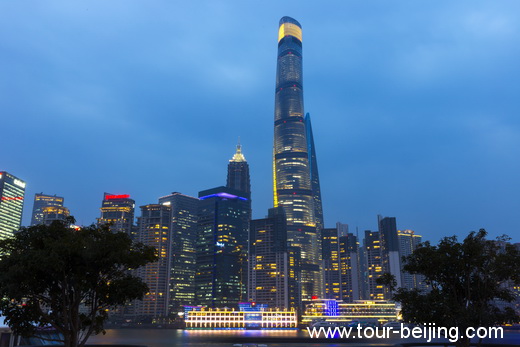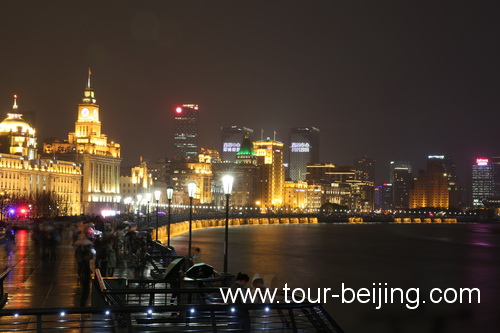What does the Bund mean in Shanghai?
The word “Bund” is an Anglo-Indian word for embankment of a muddy waterfront. It was brought by the British from India. The Bund was originally the towpath for dragging barges of rice on Huangpu River in Shanghai.
From the mid-19th century onward, the area around the Bund became the seat of the colonial power – the British Concession (1845) on the northern Bund and the French Concession ( 1849) on the southern Bund.
Read my another articlet How to visit the Bund in Shanghai for more information to plan your trip to the Bund.
When was the Bund in Shanghai built?
The Bund had its golden age in 1920s and 1930s before the chaos of the War and occupation. On the west side of the Bund appeared a group of imposing landmark hotels, most powerful banks and trading houses of various architectural styles – neoclassic, Renaissance, eclecticism, baroque and modernism.
The Bund in Shanghai is my favorite urban walk in the world though you may have your favorites like Piccadilly in London, Champs-Elysees in Paris and Fifth Avenue in New York and the list could be much longer.
Wandering the promenade, you ogle at the Pudong Skyline opposite, feeling the strikingly contrast between the futuristic skyscrapers on the east of the Bund across Huangpu River and the clusters of the past glorious colonial buildings on the west side.
The 22 heritage buildings on the Bund
The central stretch of the Bund sits on No.01 East Zhongshan Road, a one-km long strip starting from the eastern tip of Yan’an Road on the south and Waibaidu Bridge on the north. It has a grandiose sweep of 22 well-preserved and renovated heritage buildings. To examine the magnificent facades and even visit the interiors of those open to the public takes about one hour. The Bund is the trump card on your Shanghai tour.
I’ve compiled a simple photo guide to the 22 heritage buildings on the Bund built during the concession era ( most of the buildings were completed in 1920s and 1930s). Before examining the buildings one by one from south to north, it is interesting to have a family group photo of the connected heritage buildings as a whole.
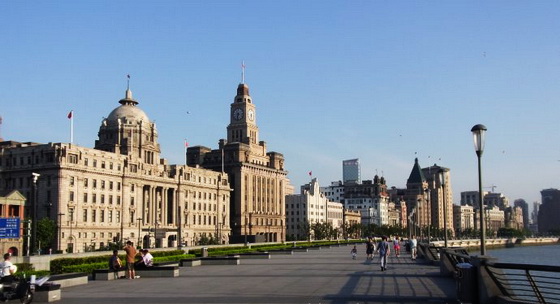
1. Asia Building or McBain Building 亚细亚大楼 ( The Bund 1 )
Located at No.01, East Zhongshan Road on the southern tip of the strip of the central Bund. Crowned as the No.01 Building of the Bund, it was built in 1916 with 7 floors and later one more was added.
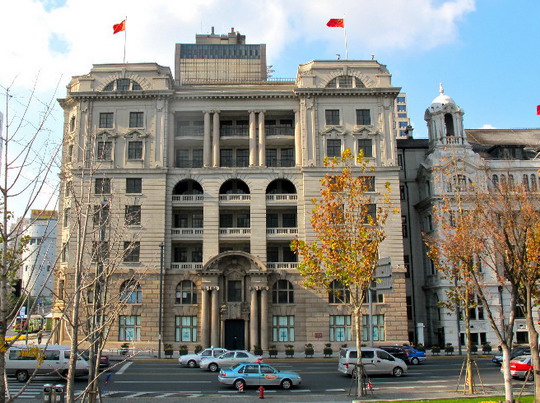
Asia Building is the key cultural relic under the state protection. The exterior of the build is the mixed styles of neoclassic and eclecticism with baroque touches. It features simplicity, elegance and magnificence. Now it is occupied by the China Pacific Insurance Company.
2. Shanghai Club 上海总会 (The Bund 2)
The famous building was originally constructed in 1861 and used as a social place for the British expats. The present 6-floor building was designed by the British architect H. Tarrant and commissioned in 1910 with a grand opening ceremony.
The Shanghai Club’s most famous feature is the “longest bar” in the world, 34 meters long and made of mahogany.

The building is the style of renaissance, and the exterior decorative style is the baroque. The columns between the 3rd and 4th floors are the ionic style. It has two baroque style pavilions on the top.
It is now transformed into the luxury hotel – The Wardorf Astoria Shanghai on the Bund (under Hilton chain ).
3. Union Building 有利大楼 (The Bund 3)
Originally built in 1916, it was the first steel-frame building in Shanghai. It is said that the steel frame was bought from Germany’s ThyssenKrupp Company.
The whole building has six floors featuring the style of renaissance and the exterior baroque decorative style. The columns on the both sides of the gate are the ionic style.
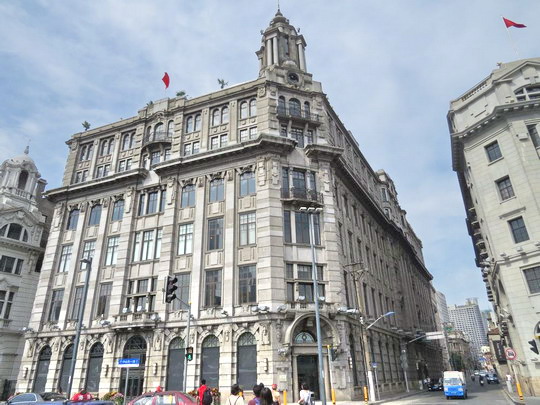
In 1937, the building was taken by Chartered Mercantile Bank of India, London and China. In 2004, the world outstanding architect – Michael Graves transformed the building into a brand new landmark comprising food , art, culture, music and fashion, a leading trendy destination. Now Union Building is hyped as The Bund No.03.
4. Nissin Building 日清大楼 ( The Bund 5 )
The Nissin Building was built by Nissin Bank in 1925. It was used by Nishin Navigation or Nisshin Kisen Kaisha Steamship Company. The whole building has 6 floors featuring Japanese style elements coupled with modern concrete design.
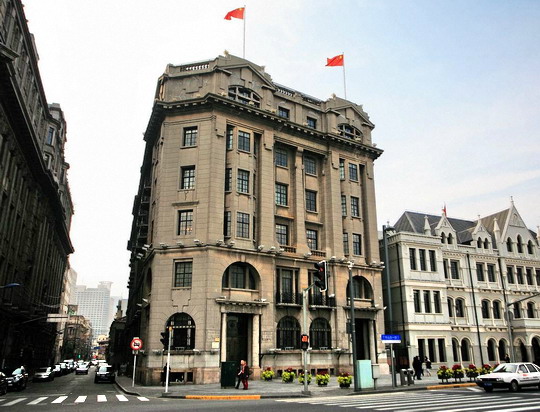
The building was later taken successively by Shanghai Haipeng Company and Huaxia Bank. Now it has been transformed into a world designer restaurant.
5. China Merchants Bank Building 中国通商银行大楼 (The Bund 6 )
It was originally built in 1886 and used by Messrs Russell & Company. In 1897, China’s first native bank – China Merchants Bank was set up.
In 1907, China Merchants Bank purchased the building and made an extensive renovations to adujst it for their purposes.
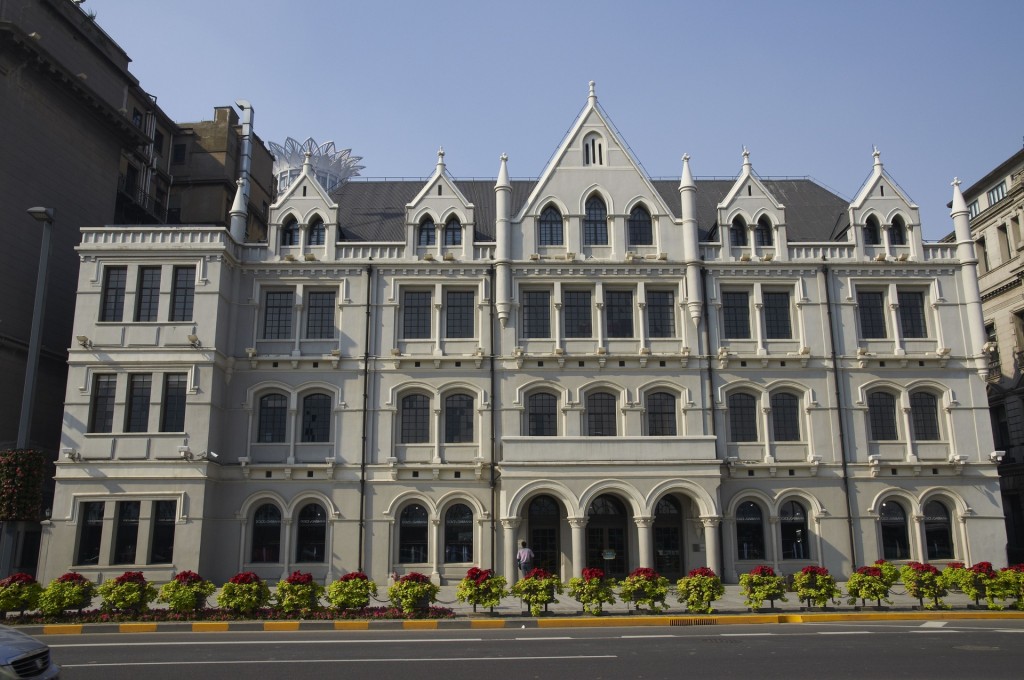
It is a building in the style of Victorian Gothic. The windows in the gables or dormers are fan shaped. The whole decoration style is featured of the strong color widely used in European religious architecture.
The building has been transformed into a complex of designer restaurants, swish bars and the flagship stores of some of the world’s most exclusive brands.
6. Telegram Building 大北电报公司大楼 (The Bund 7 )
Designed by Atkinson and Dallas and built 1907, it was a brick and concrete composite structure, once the office building for the Great Northern Telegraphy Corporation.
It is the style of late French Renaissance with two Baroque style domes with the rococo style touches.
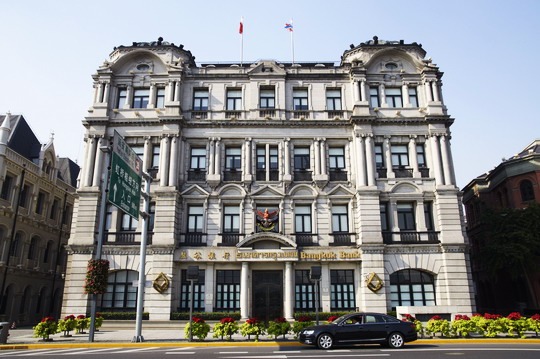
Later it was purchased by the Bangkok Bank which was founded in 1944. Now the Royal Thai Consulate General now occupies the third floor. It is also home to the Bangkok Bank China (盘谷银行).
7. Russell & Co. Building 轮船招商局大楼 (The Bund 9 )
Originally built in 1846 by the Russell & Co, it was sold to the China Merchants Steamship Company in 1877. In 1901, the Russell & Co. Building was reconstructed and the new building was designed by Atkinson&Dallas Architects and Civil Engineers Ltd. The whole building has three floors made of the bricks and woods.
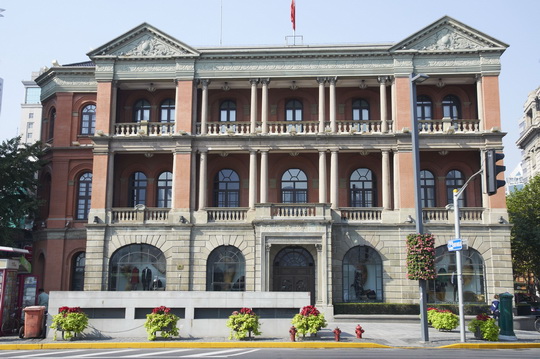
The building has the neo-classicism style. On the second and third floors, there are the interior balconies. The space is kept by the classical columns. It was the office building of China Merchants Shanghai Company.
Now it is the Shanghai flagship store of the international brand – SHIATZYCHEN (夏姿上海旗舰店).
8. HSBC Building 汇丰银行大楼 ( The Bund 12 )
The HSBC Building is the the most eye-catching and largest structure in the strip of the concession-era buildings on the Bund. The Hong Kong and Shanghai Bank Building was completed in 1923. The HSBC Building is the most outstanding piece of Western style classical architecture in China modern history.
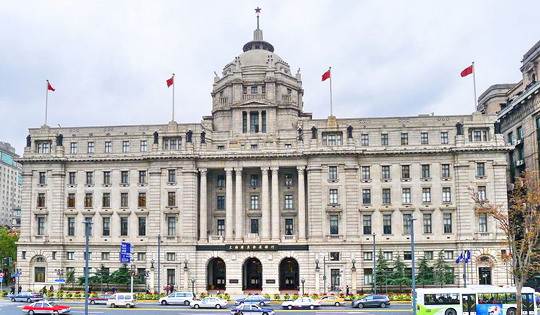
It is one of the best Palmer and Turner buildings and once dubbed as the most exquisite architecture from Suez Canal to Far-East Bering Strait. The building has seven stories including the top, a semi-sphere roof.
The whole architectural structure uses the steel framework with the exterior made of the bricks and woods. The interior is in the style of the classicism: the ionic columns, sunk-panel ceiling, the marble-paved floor, breast wall and pillars.
Now it is the office building of Pudong Development Bank. The Hong Kong and Shanghai Bank built a new tower in the Pudong district. It is 46 floors and 203.4 meters tall.
9. The Customs House 上海海关大楼 (The bund 13 )
As the sister building of HSBC Building, the Customs Houses was built in 1927. The customs house has two parts – the east and west parts.
The east part has 8 floors facing the Bund with a huge clock tower on the top. The four clocks are set for the four sides and chimes the hour. The clocks were built in London and shipped for an earlier version of the Customs House.
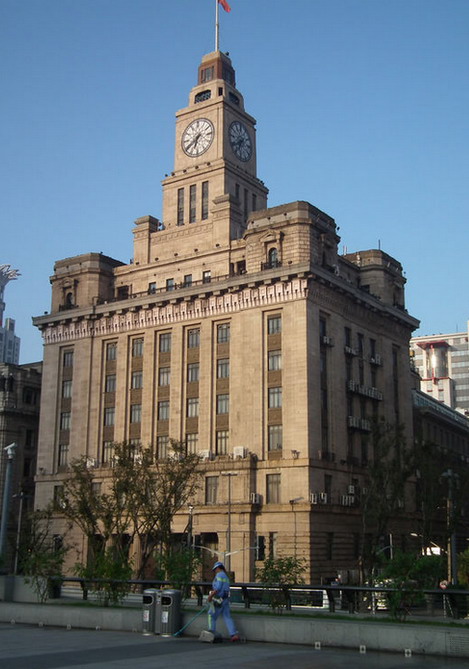
The building was designed by Palmer and Turner in the neoclassical style with strong straight lines. Doric columns are used in the reinforced concrete design. Today it is still used for customs function.
10. The Building of Bank of Communications in Shanghai 交通银行大楼 ( The Bund 14 )
The China Bank of Communications was founded in 1908 with a branch in Shanghai opening on the same year.
In 1919 at the end of the war, the China Bank of Communication took over the holdings of the Deutsch-Asiatische Bank which had 4 small buildings at this location on the Bund.
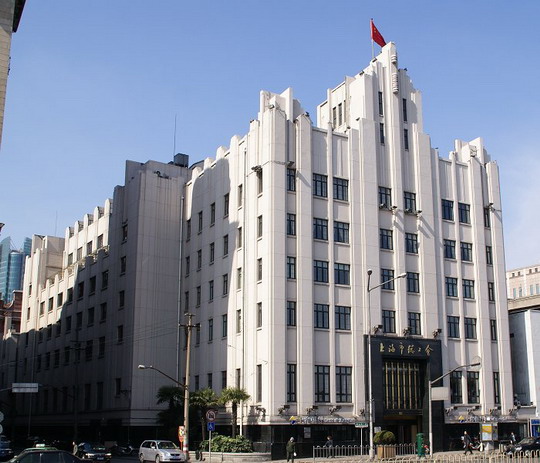
After the Anti-Japanese war, the new building the China Bank of Communications was was built in 1948 on the present location. It was designed by C.H.Gonda, the last building ever built on the Bund.
The whole building has six stories with the style of pragmatism, a wonderful example of Art-Deco, combining the modern with traditional Chinese symmetry. Today the building is now used by the Shanghai Federation of Trade Unions.
11. The Russo-Asiatic Bank Building 华俄道胜银行大楼 (The Bund 15 )
The building was built in 1902, and it was designed by Heinrich Beck, a German. The exterior features the architectural style of Italian renaissance.
The building has three stories, one of the earliest buildings on the Bund. It has two ionic columns between the second and third floors on the east side facing the Bund.
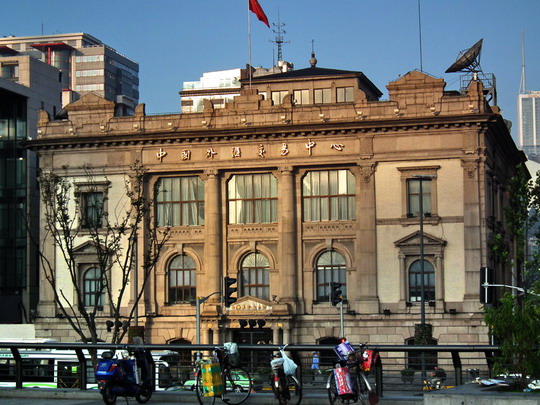
The building was the first to install an elevator. It has a granite base with tiles used to surface the light sections of the exterior walls.
A white marble staircase leads to the second floor where there are further sculpted reliefs on the walls. Today the building is used by Chinese Foreign Exchange and Trade Center and Shanghai Space Aeronautics Bureau.
12. Taiwan Bank Building 台湾银行大楼 (The Bund 16 )
The building was completed in 1924 with an area of 904 square meters. The whole building features the Japanese architectural style coupled with the merits of other different architectural styles.
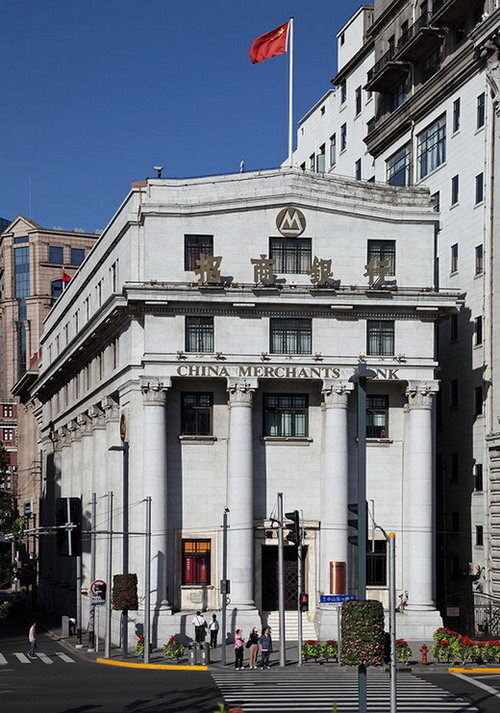
The east facade has four columns of the classical European style. The windows have small lights above the long rectangular main panes. Now the building is used by the China Merchants Bank.
13. The North China Daily News Building 上海字林西报大楼 (The Bund 17)
Designed by Lester, Johnson&Morriss, the building was built in 1921. It is the highest concession-era building on the Bund featuring the architectural style of modernism and neo-classicism. It has baroque towers, Renaissance relief sculpture, classic pillars, and a modern concrete frame structure.
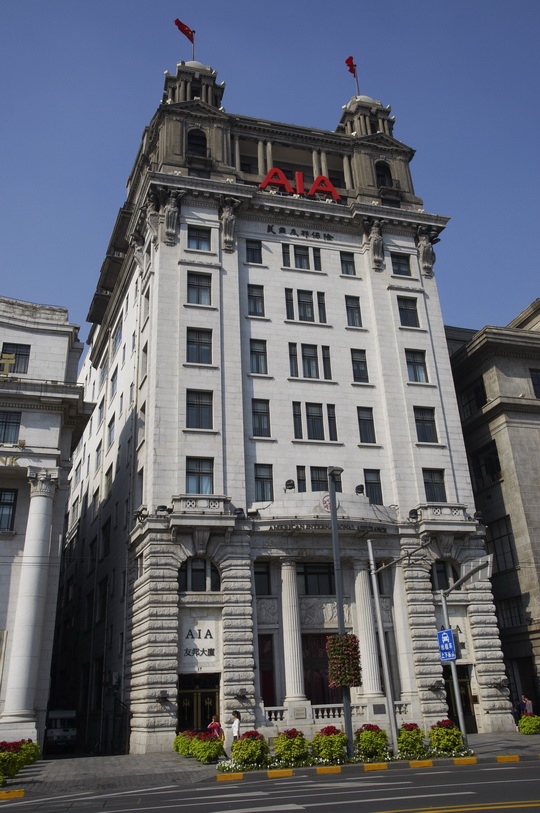
The building was first used by The “North China Daily News” , the first English newspaper in Shanghai. The “Daily News” stopped publishing in 1951. In 1996 the building was renovated and became the Shanghai branch of AIA, an American insurance company ( AIA ).
14. Chartered Bank Building 麦加利银行 (渣打银行) The Bund 18
The Chartered Bank was founded by James Wilson and established in England. It was approved by Queen Victoria in 1853. The Chartered Bank opened its Shanghai branch in 1858.
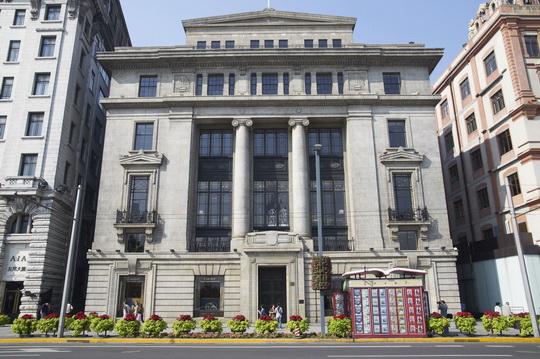
The Chartered Bank Building was complete in 1923. The building features the architectural style of eclecticism of renaissance. Now they have moved to the Pudong district. The present building is used as the flagship stores of international brands (Cartier).
15. Former Palace Hotel 和平饭店南楼 (The Bund 18b )
The building was completed in 1906 with 6 floors. It features a brick and wood structure of Renaissance style. In 1965, the hotel became the South Wing of the Peace Hotel, which is the next building, just across Nanjing Road.
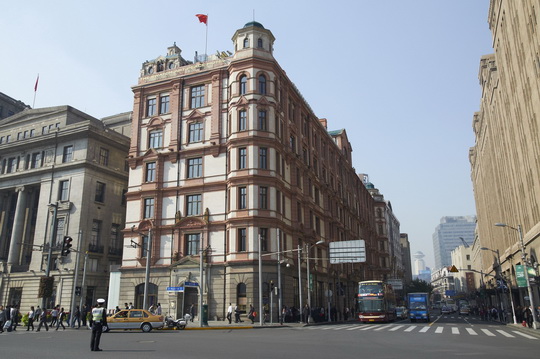
It have received many celebrity visits including the historic visit by Sun Yat-sen in December 1911, when he was provisional president.
16. Sassoon House 沙逊大厦(和平饭店北楼) The Bund 19
The hotel was originally built in 1929. The building has 10 floors with the first modernism-style which occupies an important place in the modern architectural history of Shanghai.
Designed by Palmer and Turner for Victor Sassoon. Now it is the north building of Fairmont Peace Hotel.
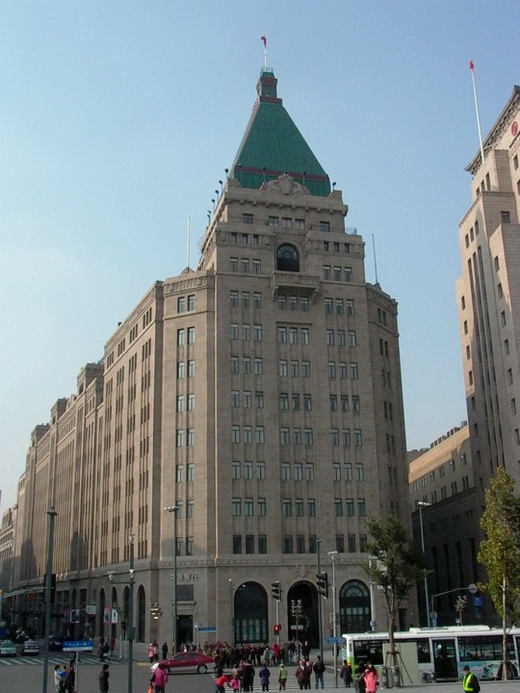
17. Bank of China Building 中国银行大楼 (The Bund 23 )
The building was completed in 1937, the only one designed and built by Chinese people. Now it is used by the branch of Bank of China in Shanghai.
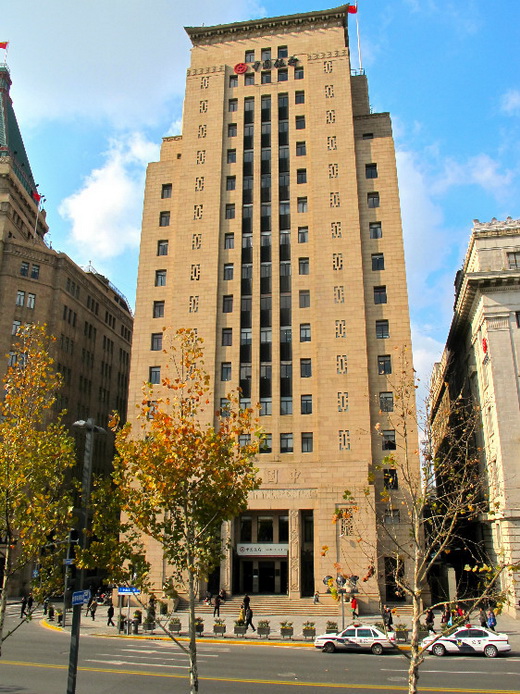
The whole building has two parts. The east part is the main building with 17 floors, which is in the Chinese native style of architecture. The west part is a four-story armored concrete building. Bank of China Building is a harmonious mix of the western architecture and Chinese traditional architecture.
18. The Yokohama Specie Bank 横滨正金银行大楼 ( The Bund 24 )
Originally built in 1924, the 7-floor building features the Japanese style of architecture. It uses ionic columns above the doorway. Now it is used by Industrial and Commercial Bank of China.
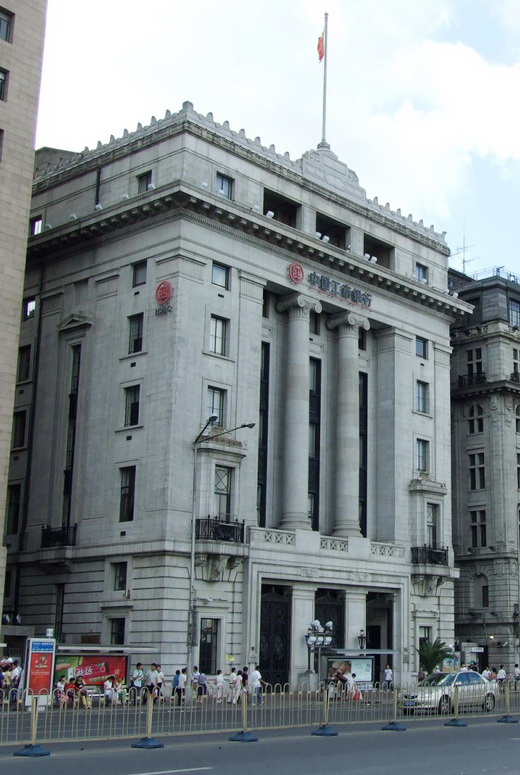
19. The Yangtze Insurance Building 扬子水火保险公司大楼(扬子大楼)The Bund 26
The Yangtze Water and Fire Insurance Company was established in 1863. The Yangtze Insurance Building was completed in 1920. It was designed by Palmer and Turner, a building featuring neoclassical style. Now it used by the Bund Branch of Agricultural Bank of China.
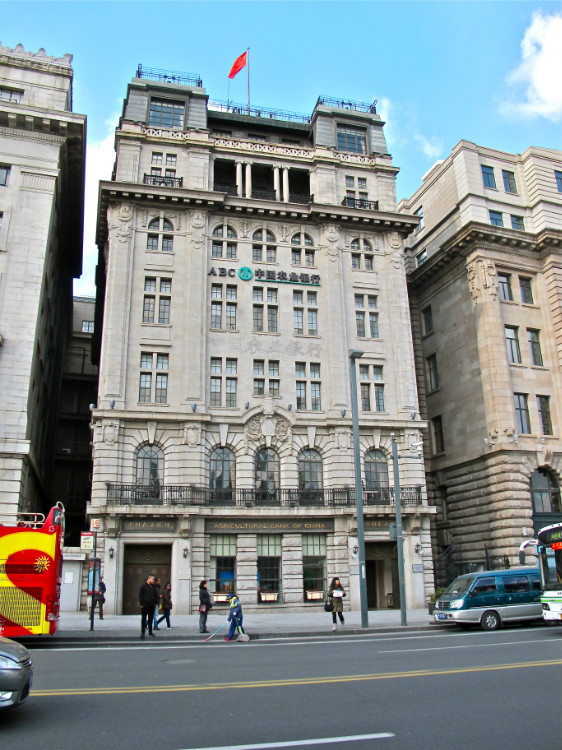
19. Jardine Matheson Building 怡和洋行大楼 ( The Bund 27 )
Originally built in 1920, the whole building features the architectural style of UK. The building has 5 stories plus 2 stories added in 1983. It once served as the headquarters for Jardine Matheson. The building is neo-classical with Corinthian columns running through the third to the fifth level.
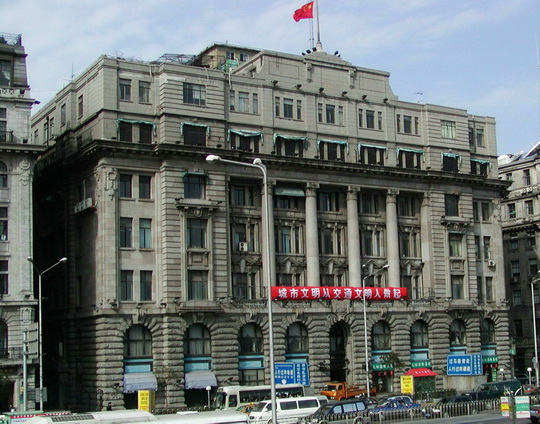
Today Jardine Matheson Building is the office of Shanghai Foreign Trade and Economic Cooperation Department.
20. Glen Line Steamship Building 格林邮船大楼 (The Bund 28 )
Originally it was the site of the Western Steamship Line Company. It was completed in 1922 and designed by Palmer and Turner. It is a seven-story building with reinforced concrete structure in the Renaissance style. The bottom two stories have granite facade. Now it is used by Shanghai Cleaning House.
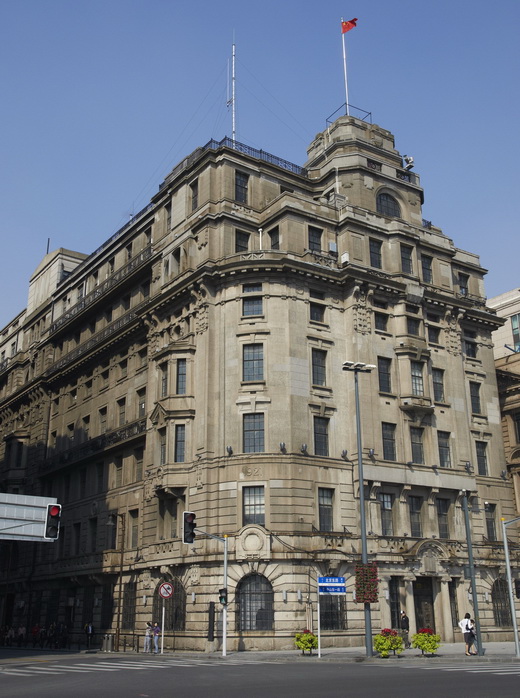
21. Banque de l’Indochine Building 东方汇理银行大楼 (The Bund 29 )
The building was completed in 1914 with French Renaissance architecture . The tall arches in the Baroque style are the centerpiece of this symmetrical building. At present is the Shanghai Branch of China Everbright Bank.
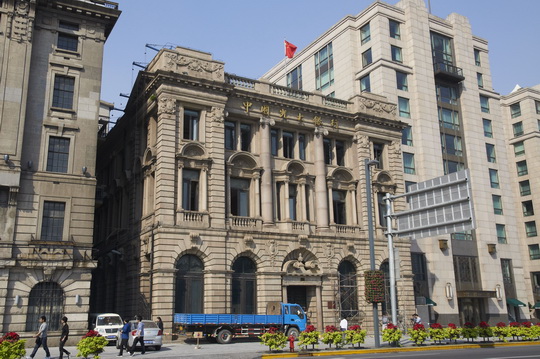
22. British Consulate Building 英国领事馆 (The Waitanyuan 33 )
The present building was rebuilt in 1873. The whole building features the architectural style of Britain in the period of renaissance. The building served as the home of the Consulate-General and British Supreme Court for China until 8 December 1941 when the Japanese occupied the Shanghai International Settlement at the beginning of the Pacific War.
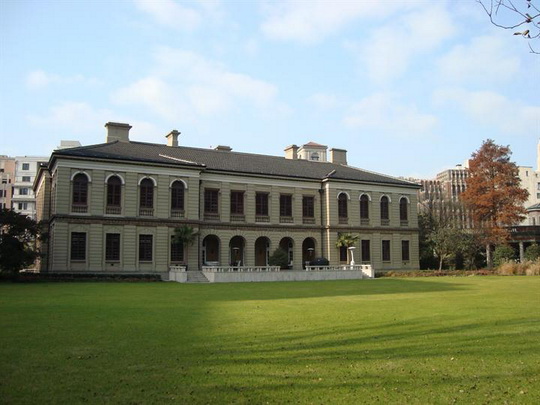
The building compound is located at the confluence of the Huangpu River and Suzhou Creek and with a total area of almost 23,000 square metres, extending from Zhongshan Dong Xi Road in the east to Yuanmingyuan Road in the west. This was the starting point of the development of the Shanghai concession.
All photos from Internet, any questions, just drop a line.
Add-On
How to Visit the Bund in Shanghai
Evening View of the Bund and Pudong Skyline Shanghai
Huangpu River Cruise Ticket Booking
How to Visit Lujiazui in Pudong
Hassle-free Shanghai Guided Tours
If you don’t want to go the do-it-yourself bus route and prefer the hassle-free escorted tours, here are some options for guided tours to Shanghai:
Shanghai Tour
Shanghai Day Tour
Shanghai Multi-Day Tour
Shanghai Evening Tour
Shanghai Cruise Port ( Transfer& Excursions )
Shanghai Beijing Tour
Shanghai Xian Tour
Shanghai Car Rental with Driver
Further Readings
Top 10 Attraction in Shanghai
Shanghai’s Top 10 Iconic Landmarks
Top 10 Markets in Shanghai
Top 10 Shopping Malls in Shanghai
Top 10 Things to Do at night in Shanghai
Best Places for Autumn Leaves in Shanghai
Top 10 Things to Do in Winter in Shanghai
Top 10 Souvenirs in Shanghai
Top 10 Photo Spots in Shanghai
10 Non-Touristy Things to Do in Shanghai
Any questions, just drop a line.






